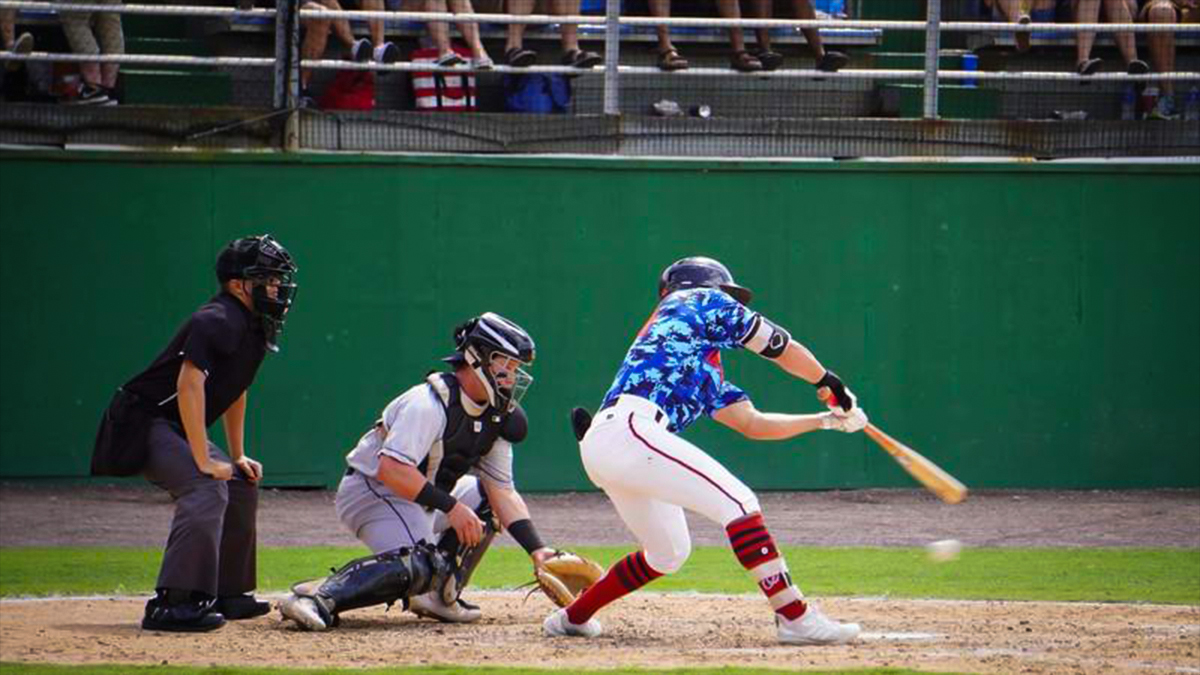Search Articles
The 3 Best Ways to Improve at Hitting a Curveball

Est. Reading:
4 min
Published: December 17, 2019
Article Contents
Summary
- A curveball will quickly expose a poor weight shift, causing a hitter to lunge at the ball. Baseball players can work on drills that will help them improve hitting a curveball.
- Even if a player doesn't have a big brother, friend, coach or pitching machine to throw bona fide curveballs, he can still train his pitch recognition with a few simple techniques.
- Next, throw regular batting practice using the different colored balls and ask the hitter to call out the type of pitch (according to the color you've chosen) as soon as he can spot it.
- Even if the batting practice thrower just throws fastballs, the task of identifying each type of pitch will still train the hitter to look hard at the details of the ball as soon as it leaves the pitcher’s hand.
- The earlier a hitter can set aside practice time to work on pitch recognition, the faster they'll build that skill.
Young hitters have a very difficult time hitting a curveball. Even at an early age when curveballs are not particularly sharp or deceptive, they’re still tough identify and hit hard.
In this article, we’ll discuss some easy ways to help players improve at hitting a curveball.
1. Fix Flaws in the Weight Shift of Your Swing
A common piece of baseball lingo is "getting exposed." The term is used when a pitcher has something—a sharp breaking ball or perhaps a high velocity fastball—that is so good that it exposes flaws in a hitter's swing.

This is especially true in youth baseball, where many players are still learning how to hit and shift their weight properly. A curveball will quickly expose a poor weight shift, causing a hitter to lunge at the ball. It's no secret that when a hitter lunges at a pitch, he has little chance of hitting it hard.

So, step one in hitting a curveball is developing a good swing. This may sound obvious but it's the foundation every hitter needs. Often parents look to pitch recognition training first, when in reality their young sluggers still need more time working on fundamental hitting technique.
Make Batting Tee Work Part of Your Hitting Foundation

Batting tee work should be a part of every hitter's practice plan. With a stationary ball, a hitter can focus first and foremost on improving the mechanics of his swing. This sets the foundation for a proper weight shift and gives him a fighting chance at squaring up a curveball.
2. Hit More Curveballs by Finding a Coach, Player or Pitching Machine to Throw Them

One challenge in learning to identify different pitches is seeing them regularly. The best way to improve at picking up curveball spin is by, well, seeing more curveballs. A few at-bats per game just won't cut it.
So, ask around—find an older player, coach, friend or parent who might be willing to throw some curveball-heavy batting practice. If that fails, the local batting cage may have a machine that could throw them, or a scan of the local classifieds might turn up an affordable used pitching machine.
Be creative and don't be afraid to ask for help—seeing more curveballs is the #1 way to improve at hitting them.
3. Use Colored Balls to Develop Better Pitch Recognition
Even if a player doesn't have a big brother, friend, coach or pitching machine to throw bona fide curveballs, he can still train his pitch recognition with a few simple techniques.

Try using different colored markers (say blue and green) to color up a few baseballs for batting practice. There are a number of ways to do this:
- Trace the seams with the marker, making them a different color than the typical red.
- Draw large dots on different aspects of the ball.
- Color large sections of the leather, making the ball appear mostly the color of the marker.
Then, assign each color to a type of pitch. Regular balls could be fastballs, blue balls curveballs and green balls changeups.

Next, throw regular batting practice using the different colored balls and ask the hitter to call out the type of pitch (according to the color you've chosen) as soon as he can spot it.
Even if the batting practice thrower just throws fastballs, the task of identifying each type of pitch will still train the hitter to look hard at the details of the ball as soon as it leaves the pitcher’s hand. This, in turn, will help teach the visual skills a hitter needs to identify the spin of a curveball versus a fastball.
What Have You Tried? Have You Improved at Hitting a Curveball?
As players climb the ranks in baseball, pitchers throw more and better curveballs, sliders and changeups.
The earlier a hitter can set aside practice time to work on pitch recognition, the faster they'll build that skill. Pitch recognition training will make it easier to lay off tough curveballs and smash the ones that hang in the zone.


